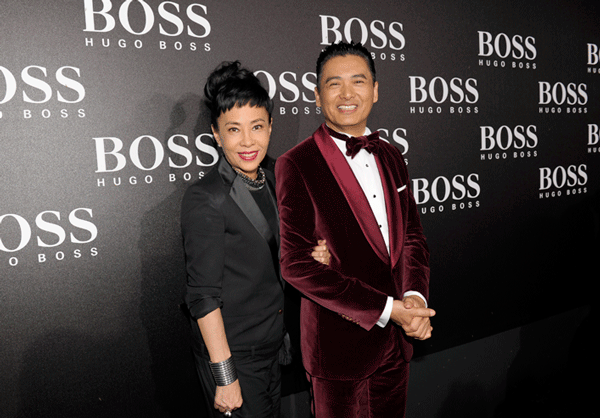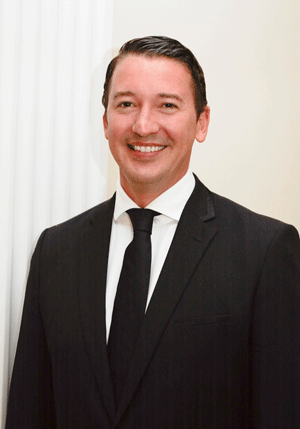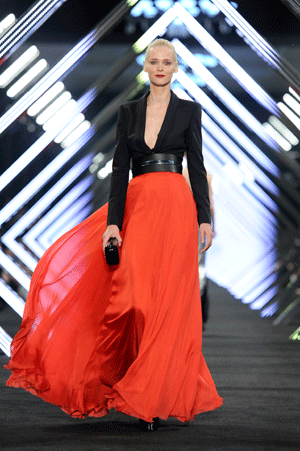What does a fashion giant need to do to get ahead in Asia? And who can help them do that? Matthew Hernon speaks with Dr. Gerrit Ruetzel, CEO & president of HUGO BOSS in the Asia Pacific region, about models, advertising, superstar tie-ups and adaptability in a new marketplace.
For many years Western brands have understood the importance of a focus on Asia, with countries such as China and Japan becoming increasingly relevant markets for the world’s biggest fashion labels. Competition for brand-loyal customers is fierce and companies know that a powerful advertising campaign is essential in giving them a significant edge over their rivals.
A decade or so ago it was all about Hollywood tie-ups, with companies keen on adding an international flavour to help sell their products. The likes of Brad Pitt, Leonardo DiCaprio and Cameron Diaz were plastered all over the place, selling everything from English lessons to underwear. Yet whilst these big names from the West haven’t disappeared, the trend of only using foreign models does appear to be changing.
More and more companies are looking at individuals closer to home to promote their products, leading to a sharp rise in the number Asian stars in commercials. Dr. Gerrit Ruetzel, CEO & President of HUGO BOSS in the Asia Pacific, believes that this shift towards more local celebrities is likely to increase further in the future.
“It is definitely a pattern I see becoming more prevalent over the coming years,” he tells Weekender. “Ten years ago this region, including Japan, was so heavily influenced by Europe and America. You would barely see an advertising campaign with an Asian face as even local brands would use Western models to raise the impression that they were from Europe.
If you look around now though, you can see a big difference. I think the main reason for that is that these days people in Asia have more pride in their heritage and where they come from. They no longer need to look to foreign lands as there are plenty of inspirational people closer by so it is natural that more companies will try to use more Asian people for their advertising campaigns.”
It is not just local corporations utilizing Asian stars. Last year Chinese model Liu Wen and Taiwanese-Canadian actor Godfrey Gao were named as the first Asian faces of luxury brands Estee Lauder and Louis Vuitton, while Japanese stars Kenichi Matsuyama and Hiroyuki Sanada joined Jose Mourinho in the Braun shaving commercials. When HUGO BOSS decided to use an Asian celebrity as its Brand Ambassador, Ruetzel says, they were very careful about who they selected.
“It was completely new for us,” says Ruetzel. “Not only was it the first time to use an Asian person, but also the first time to use a celebrity for our apparel collection. It was vital that we chose the right person. It couldn’t just be anybody; we wanted someone that was well known and respected, yet at the same time not over-exposed.
That is why we chose Chow Yun Fat [pictured a the top of the page]. He’s an absolute megastar in Asia. He has been in some of the greatest Chinese movies ever made, like Crouching Tiger, Hidden Dragon. Everyone knows him, but he is not somebody that you will see in lots of commercials. He is said to be extremely picky when it comes to promoting brands, so he was the ideal choice for us.”
Film writers in China have dubbed Yun Fat the “Asian George Clooney” and he is both incredibly stylish and charismatic, qualities that are reflected in HUGO BOSS’ clothes. It has three main lines; Orange, which is for the younger, more casual shopper, HUGO for the risk-averse, impeccably dressed man and Boss, which is more trend-conscious and cutting-edge than the other two.
It is the latter that Yun Fat models for, though Ruetzel is determined to see all three succeed in Asia, a region he believes is the most dynamic in the world.
At the moment the Asian market accounts for around 15% of the company’s total revenue and the plan is to increase that figure to 20% by 2015.
“We really want to make a big statement in this continent,” says Ruetzel. “That doesn’t just mean China, but all over. In Japan for example we really want to push our HUGO (line) as well as look for flagship stores in Tokyo. We’ve been in this country for more than 25 years and we have always done well, but we want to become even bigger.
Having conducted business here for so long, we feel that we have a good understanding of how things are done in this part of the world. We don’t need to rely on wholesalers anymore. Our goal is to concentrate more on our retail stores so we can have daily contact with the end consumer, this gives us more accurate and objective information.”
Text by Matthew Hernon (interview by Matthew Hernon and Ray Pedersen)
Thanks to HUGO BOSS for supplying us with all images, to which they retain copyright.











